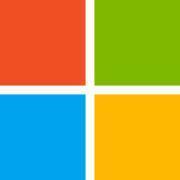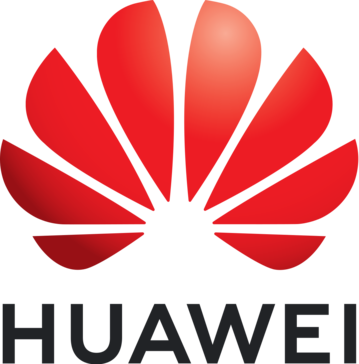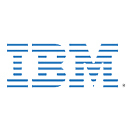Description

GraalVM

Microsoft Build of OpenJDK
Comprehensive Overview: GraalVM vs Microsoft Build of OpenJDK
GraalVM and Microsoft Build of OpenJDK are both significant offerings in the field of Java runtime environments, each serving unique purposes and targeting distinct user bases. Here's a comprehensive overview of both:
GraalVM
a) Primary Functions and Target Markets:
- Primary Functions:
- High Performance: GraalVM is designed to offer high performance for applications with its advanced Just-In-Time (JIT) compiler. It allows for improved execution speeds for Java applications.
- Polyglot Capabilities: One of the standout features of GraalVM is its ability to support multiple languages on the Java Virtual Machine (JVM). It can run Java, JavaScript, LLVM-based languages (like C and C++), Python, Ruby, R, and more.
- Ahead-of-Time (AOT) Compilation: GraalVM supports Native Image, a feature that compiles Java code into native machine code to enable faster startup times and reduced memory overhead.
- Interoperability: It offers tight interoperability between different programming languages, allowing for seamless calling between languages.
- Target Markets:
- GraalVM targets developers and organizations looking for high-performance execution for Java applications and those interested in polyglot environments.
- Enterprises needing fast startup times, such as microservice-based architectures, can benefit from the Native Image feature.
- Academic and research institutions studying compiler technology and language interoperability may also be interested in GraalVM’s capabilities.
b) Market Share and User Base:
- GraalVM is more of a niche product compared to standard JVM distributions but has been gaining popularity due to its unique capabilities, especially in cloud-native and microservices applications.
- Its user base includes both individual developers and large enterprises, particularly those requiring advanced performance optimizations and polyglot capabilities.
c) Key Differentiating Factors:
- Polyglot Programming: GraalVM’s ability to run multiple programming languages on the JVM sets it apart.
- Native Image Compilation: The ability to compile Java applications into native executables is a major difference.
- Performance Enhancements: It offers superior performance optimizations through its JIT compiler.
Microsoft Build of OpenJDK
a) Primary Functions and Target Markets:
-
Primary Functions:
- Standard Java Runtime: Microsoft Build of OpenJDK provides a straightforward, open-source Java Development Kit (JDK). It is based on OpenJDK and is meant to be a reliable, long-term support solution for running Java applications.
- Compatibility and Support: It focuses on providing a high level of compatibility with the Java ecosystem and ensuring comprehensive support and updates.
-
Target Markets:
- It mainly targets enterprises and developers seeking a reliable and well-supported version of OpenJDK.
- Microsoft Azure developers might find it particularly useful when deploying Java applications in a cloud environment supported by Microsoft.
- Organizations with existing Microsoft infrastructure looking for integrated solutions would consider this version of JDK.
b) Market Share and User Base:
- Microsoft Build of OpenJDK benefits from Microsoft’s vast user base and its integration into Azure, which offers a significant presence in the enterprise market.
- The market share is likely more significant than GraalVM due to its widespread applicability as a straightforward Java runtime solution.
c) Key Differentiating Factors:
- Integration with Microsoft Ecosystem: Providing integration and direct support within Microsoft Azure environments.
- Enterprise Support: Offers support and long-term maintenance as part of Microsoft’s product offerings, which is attractive to enterprises.
- OpenJDK Compatibility: It remains close to the OpenJDK reference, providing high compatibility and predictability for Java-based applications.
Conclusion
While both GraalVM and Microsoft Build of OpenJDK are based on Java, they serve different needs. GraalVM is ideal for those needing advanced performance and polyglot capabilities, while Microsoft Build of OpenJDK provides a solid, supported, and compatible Java runtime, particularly for Microsoft-centered infrastructures. Each has carved out its niche within the Java community, contributing to the diversity and adaptability of Java in various tech ecosystems.
Contact Info

Year founded :
Not Available
+1 234-567-8910
Not Available
United States
http://www.linkedin.com/company/graalvm

Year founded :
Not Available
Not Available
Not Available
Not Available
Not Available
Feature Similarity Breakdown: GraalVM, Microsoft Build of OpenJDK
GraalVM and the Microsoft Build of OpenJDK are both Java Development Kit (JDK) distributions that aim to provide developers with robust tools for building and running Java applications. Here's a breakdown of their feature similarities and differences:
a) Core Features in Common
-
Java Compatibility: Both GraalVM and the Microsoft Build of OpenJDK are fully compatible with Java SE standards, ensuring that Java applications can run seamlessly across different environments.
-
Performance Optimization: Both distributions offer performance improvements over the standard OpenJDK. GraalVM achieves this through its advanced just-in-time (JIT) compiler, while Microsoft Build of OpenJDK includes various enhancements and optimizations contributed by Microsoft.
-
Cross-Platform Support: Both are designed to be cross-platform, supporting major operating systems such as Windows, Linux, and macOS.
-
Tooling and Libraries: Both provide essential tools and libraries necessary for Java development, such as debugging utilities, monitoring, and management interfaces.
-
Security Updates: Both distributions commit to providing timely security updates to ensure that applications remain protected against vulnerabilities.
b) User Interfaces Comparison
-
Command Line and Configuration: Both distributions primarily target developers familiar with command-line interfaces for configuration and management. Neither provides a graphical user interface (GUI) out-of-the-box since they focus on the back-end runtime aspect.
-
Integration: Each of these can be integrated into popular Integrated Development Environments (IDEs) like IntelliJ IDEA, Eclipse, and Visual Studio Code, where IDEs offer more user-friendly interfaces for development work.
c) Unique Features
-
GraalVM Unique Features:
- Polyglot Capabilities: One of GraalVM’s standout features is its ability to execute applications not just in Java but also in other languages like JavaScript, Python, Ruby, R, and more, on the same runtime platform.
- Native Image: GraalVM offers a native image utility that compiles Java applications ahead-of-time into native executables, resulting in fast startup times and lower resource consumption.
- Truffle Framework: Used for building interpreters for other programming languages, which leverages the GraalVM compiler for high performance.
-
Microsoft Build of OpenJDK Unique Features:
- Microsoft Azure Integration: As a Microsoft product, there is seamless integration with Azure, which may involve enhanced support and optimizations for applications running within Microsoft's cloud infrastructure.
- Extended Support: Microsoft offers extended support and specific servicing options which may be attractive for enterprises wanting long-term stability.
- Alignment with Microsoft Ecosystem: Improved interoperability and potential optimizations when used within broader Microsoft infrastructure and tooling.
In summary, while both GraalVM and Microsoft Build of OpenJDK share a strong common foundation by supporting Java SE standards and offering performance optimizations, GraalVM is noted for its polyglot capabilities and native image feature, whereas Microsoft Build of OpenJDK emphasizes integration with Microsoft's ecosystem and long-term support.
Features

Not Available

Not Available
Best Fit Use Cases: GraalVM, Microsoft Build of OpenJDK
GraalVM
a) Best Fit Use Cases for GraalVM:
-
Polyglot Applications: GraalVM shines in environments that require running multiple programming languages in a single application. Businesses that leverage a combination of Java, JavaScript, Python, Ruby, R, C/C++, and even WebAssembly can greatly benefit from its seamless interoperability.
-
Performance-Critical Applications: Its ability to compile Java into native machine code at runtime (Just-In-Time compilation) or ahead of time (AOT) gives performance benefits, making it ideal for applications requiring high efficiency and low latency.
-
Microservices and Cloud-Native Applications: GraalVM can significantly reduce startup times and memory usage via its native image technology, making it an excellent choice for serverless functions, microservices, and cloud-native architectures.
-
Financial Services and High-Throughput Systems: These industries typically require fast execution and low-latency systems. GraalVM can optimize execution performance, which is critical for real-time trading systems or complex financial analytics.
-
Enterprises Looking for Cost Savings: By reducing resource consumption, GraalVM can help enterprises reduce operational costs, particularly in cloud environments where costs are tied to resource usage.
Industry Verticals and Company Sizes:
- Large Enterprises and Financial Services: These organizations can benefit from the scalability and performance improvements.
- Tech Startups: Particularly those in fintech or areas leveraging AI/ML with Java bindings in Python or R, can use GraalVM for cost-effective scaling.
- Research Institutes and Educational Organizations: They can leverage polyglot features for diverse computational projects.
Microsoft Build of OpenJDK
b) Preferred Use Cases for Microsoft Build of OpenJDK:
-
Enterprise Java Applications: Organizations that have heavily invested in the Java ecosystem and require stability, extensive support, and long-term viability benefit from the Microsoft Build of OpenJDK. It provides a trusted, enterprise-grade JDK maintained by Microsoft.
-
Microsoft Ecosystem Integration: Businesses operating within the Microsoft ecosystem (e.g., using Azure cloud solutions) will find this version of OpenJDK beneficial due to Microsoft's integrated support and optimizations for Azure.
-
Cross-Platform Consistency: Companies needing a solid JDK that performs consistently across Windows, Linux, and macOS may prefer Microsoft's offering, which is tailored for cross-platform enterprise needs.
-
Large-Scale Enterprise Software: Applications that are mission-critical, such as ERP, CRM systems where predictability and dedicated support can be crucial.
-
Developers Using VS Code: Organizations utilizing VS Code and other Microsoft development tools might find synergy in using Microsoft's OpenJDK distribution due to better integration and support.
Industry Verticals and Company Sizes:
- Large Enterprises: Seeking reliable support and long-term stability for Java applications.
- SMBs with Microsoft Infrastructure: Companies already leveraging Microsoft Azure or 365 can achieve better synergy.
- Tech Companies Focused on Cross-Platform Delivery: Ideal for products that need a consistent Java runtime across multiple OS platforms.
Both GraalVM and Microsoft Build of OpenJDK serve distinct purposes but can be chosen based on specific project needs, performance requirements, and infrastructure considerations within various industries.
Pricing

Pricing Not Available

Pricing Not Available
Metrics History
Metrics History
Comparing undefined across companies
Conclusion & Final Verdict: GraalVM vs Microsoft Build of OpenJDK
Conclusion and Final Verdict
When choosing between GraalVM and Microsoft Build of OpenJDK, it's essential to consider the specific use cases and requirements of your applications. Both products offer unique strengths that can be leveraged to optimize Java application performance and development.
a) Best Overall Value
GraalVM offers the best overall value if you are looking for cutting-edge performance optimizations, the ability to compile Java applications into native executables, and a multi-language runtime environment. Its advanced capabilities in performance tuning and versatility make it a powerful choice for innovative projects that require more than just standard Java execution.
Microsoft Build of OpenJDK, on the other hand, provides excellent value if you are seeking a stable, well-supported, and reliable JDK for enterprise software development. With Microsoft’s backing, it's a robust choice for organizations that need solid performance, assurance of long-term support, and integration within the Microsoft ecosystem.
b) Pros and Cons
GraalVM Pros:
- Performance: Offers ahead-of-time (AOT) compilation to create native images, drastically reducing startup times and memory footprint.
- Multi-Language Support: Supports additional languages such as JavaScript, Python, Ruby, and R, making it suitable for polyglot applications.
- Ecosystem Compatibility: Can interoperate with various JVM-based and native libraries, expanding its utility.
GraalVM Cons:
- Complexity: Requires more effort to set up and configure, especially for native image generation.
- Compatibility: Certain Java frameworks and libraries may have compatibility issues with native images.
- Learning Curve: Developers may face a steeper learning curve due to its unique features and configurations.
Microsoft Build of OpenJDK Pros:
- Stability and Reliability: Offers a stable OpenJDK with regular updates and security fixes.
- Integration: Seamless integration with Azure and other Microsoft services.
- Support: Backed by Microsoft's customer support and assurance of long-term maintenance.
Microsoft Build of OpenJDK Cons:
- Traditional Performance: Lacks the advanced AOT compilation and polyglot features provided by GraalVM.
- Innovation: May not offer the latest experimental features that GraalVM provides.
c) Specific Recommendations
For users deciding between GraalVM and Microsoft Build of OpenJDK:
-
Choose GraalVM if your primary goal is to maximize performance with native image compilation, need multi-language support, or if your application can benefit from running various languages on a single VM. It's ideal for cloud-native microservices where startup and response time are critical.
-
Choose Microsoft Build of OpenJDK if your application prioritizes stability, compatibility, and ease of integration within an enterprise setting, especially if you are already using Microsoft’s ecosystem. It's a good fit for traditional enterprise applications and systems that require dependable Java performance.
In conclusion, both GraalVM and Microsoft Build of OpenJDK are valuable tools, each suited to different scenarios in the Java ecosystem. Assess your specific application needs, existing infrastructure, and future plans to determine which platform aligns best with your objectives.
Add to compare



